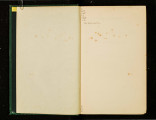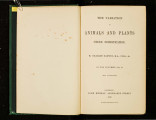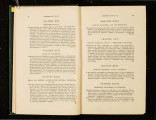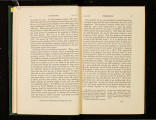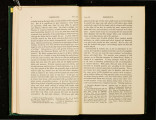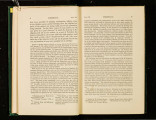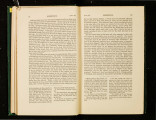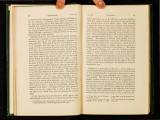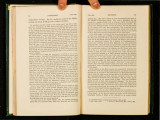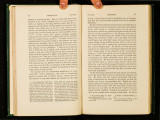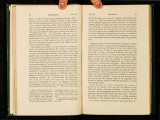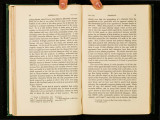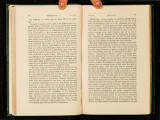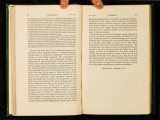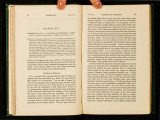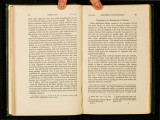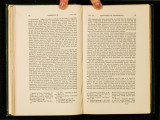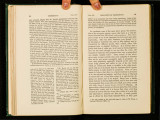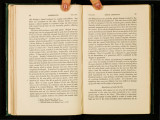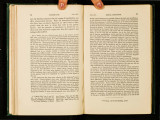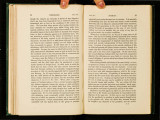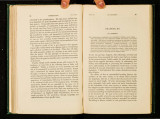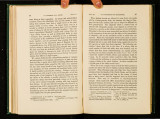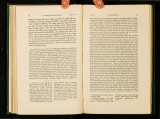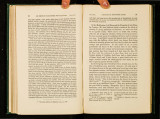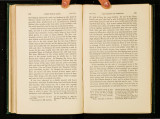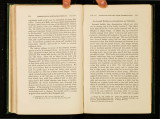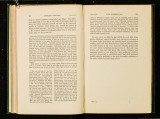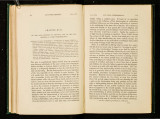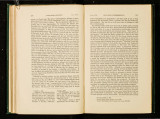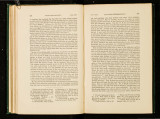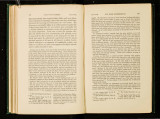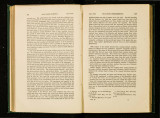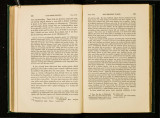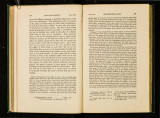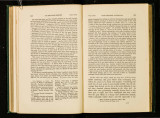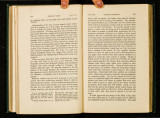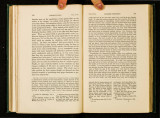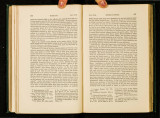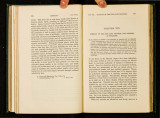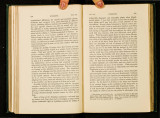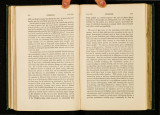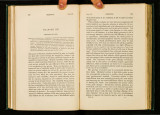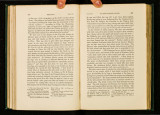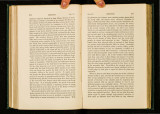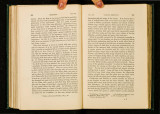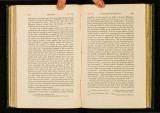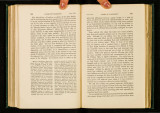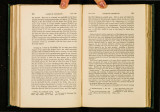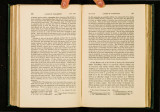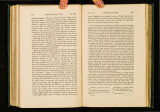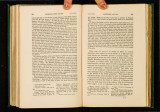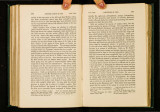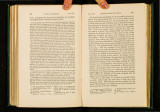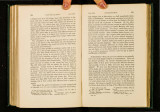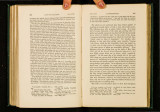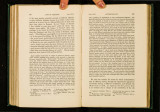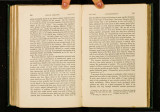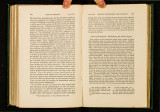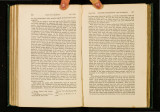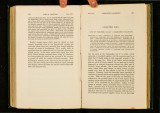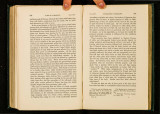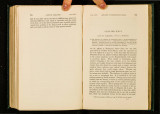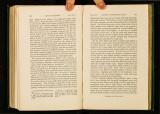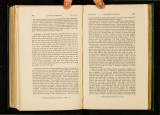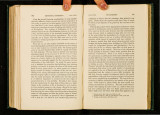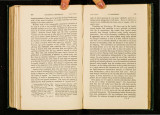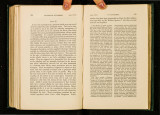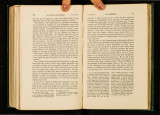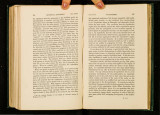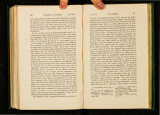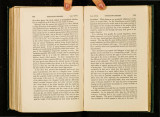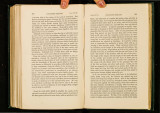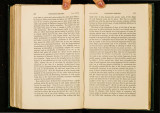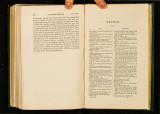| OCR Text |
Show 266 CAUSES OF VARIABILITY. CII.AP. XXII. of distinct species, besides commingling their characters, adds greatly to their variability, it has probably arisen that some botanists have gone so far as to maintain 39 that, when a genus includes only a single species, this when cultivated never varies. The proposition made so broadly cannot he admitted; but it is probably true that the variab~ty of .cultivated monotypic genera is much less than that of genera mcludmg nume- 1·ous species, and this quite independently of the effects of crossing. I have stated in my' Origin of Species,' and in a future work shall more fully show, that the species belonging to small genera generally yield a less number of varieties in a state of nature than those belonging to large genera. Hence the species of small genera would, it is probable, produce fewer varieties under cultivation than the already variable species of larger genera. Although we have not at present sufficient evidence that the crossing of species, which have never been cultivated, leads to the appearance of new characters, this apparently does occur with species which have been already rendered in some degree variable through cultivation. Hence crossing, like any other change in the conditions of life, seems to be an element, probably a potent one, in causing variability. But we seldom have the means of distinguishing, as previously remarked, between the appearance of really new characters and the reappearance of long-lost characters, evoked through the act of crossing. I will give an instance of the difficulty in distinguishing such cases. The species of Datura may be divided into two sections, those having white flowers with green stems, and those having purple flowers with brown stems: now Naudin 40 crossed Datum lcevis andferox, both of which belong to the white section, and raised from them 205 hybrids. Of these hybrids, every one had brown stems and bore purple flowers; so that they resembled the species of the other section of the genus, and not their own two parents. Naudin was so mueh astonished at this fact, that he was led carefully to observe both parent-species, and he discovered that the pure seedlings of D. j e1'ox, immediately after germination, had dark purple stems, extending from the young roots up to the cotyledons, and that this tint remained ever afterwards as a ring round the base of the stem of the plant when old. Now I have shown in the thirteenth chapter that the retention or exaggeration of an early character is so intimately related to reversion, that it evidently comes under the same principle. Hence probably we ought to look at the purple flowers and brown stems of these hybrids, not as new characters due to variability, but as a retmn to the former state of some ancient progenitor. Independently of the appearance of new characters from crossing, a few words may be added to what has been said in former chapters on the unequal combination and transmission of the characters proper to the two parent-forms. ·when two species or mces are crossed, the offspring of 39 This was the opinion of the elder De Candolle, as quoted in ' Die. Class. d'Hist. Nat.,' tom. viii. p. 405. Puvis in his work, 'De Ia Degc'neratio11,: 1837, p. 37, has discussed this same point. 10 ' Comptes Rendus,' Novembro 21, 1864, p. 838. CHAP. XXII. CAUSES OF VARIABILITY. 267 the first generation are generally uniform, but subsequently they display an almost infinite diversity of character. He who wishes, says Kolreuter,41 to obtain an endless number of varieties from hybrids should cross and recross them. There is also much variability when hybrids or mongrels are reduced or absorbed by repeated crosses with either pure parent-form; and a still higher degree of variability when three distinct species, and most of all when four species, are blended together by successive crosses. Beyond this point Gartner,42 on whose authority the foregoing statements are made, never succeeded in effecting a union; but Max Wichma 43 united six distinct species of willows into a single hybrid. The sex of the parent-species affects in an inexplicable manner the degree of variability of hybrids; for Gartner 44 repeatedly found that when a hybrid was used as the father, and either one of the pme parent-species, or a third species, was used as the mother, the offspring were more variable than when the same hybrid was used as the mother, and either pure parent or the same third species as the father: thus seedlings from Dianthus barbatus crossed by the hybrid D. chinensi-barbatus were more variable than those raised from this latter hybrid fertilised by the pme D. barbatus. Max Wichura 45 insists strongly on an analogous result with his hybrid willows. Again Gartner 46 asserts that the degree of variability sometimes differs in hybrids raised from reciprocal crosses between the same two species; and here the sole difference is, that the one species is first used as the father and then as the mother. On the whole we see that, independently of the appearance of new characters, the variability of successive crossed generations is extremely complex, partly from the offspring partaking unequally of the characters of the two parent-forms, and more especially from their unequal tendency to revert to these same characters or to those of more ancient progenitors. On the Manner and on the Period of Action of the Causes which induce Variability.-This is an extremely obscure subject, and we need here only briefly consider, firstly, whether inherited variations are caused by the organisation being directly acted on, or indirectly through the reproductive system; and secondly, at what period of life or growth they are primarily caused. We shall see in the two following chapters that various agencies, such as an abundant supply of food, exposure to a different climate, increased use or disuse of parts, &c., prolonged during several generations, certainly modify either the whole organisation or certain organs. This direct action of changed conditions perhaps comes into play much more frequently than can be proved, and it is at least clear that in all cases of bud- 41 'Nova Acta, St. Petersburg,' 1794, p. 391. 42 'Bastarderzeugung,' s. 507,516,572. 43 'Die Bastardbefruchtung,' &c., 1865, s. 24. 44 'Bastarderzeugung,' s. 452, 507. 45 'Die Bastardbefruchtung,' s. 56. 46 'Bastarderzeugung,' s. 423. |




